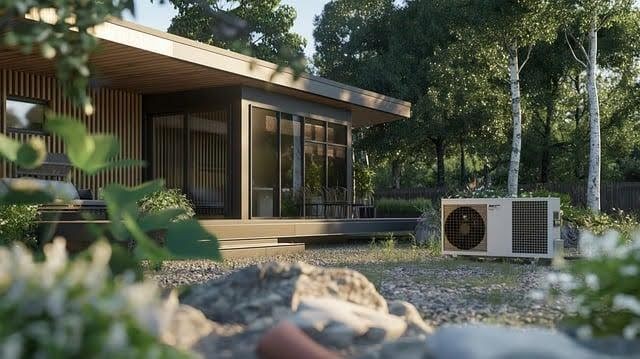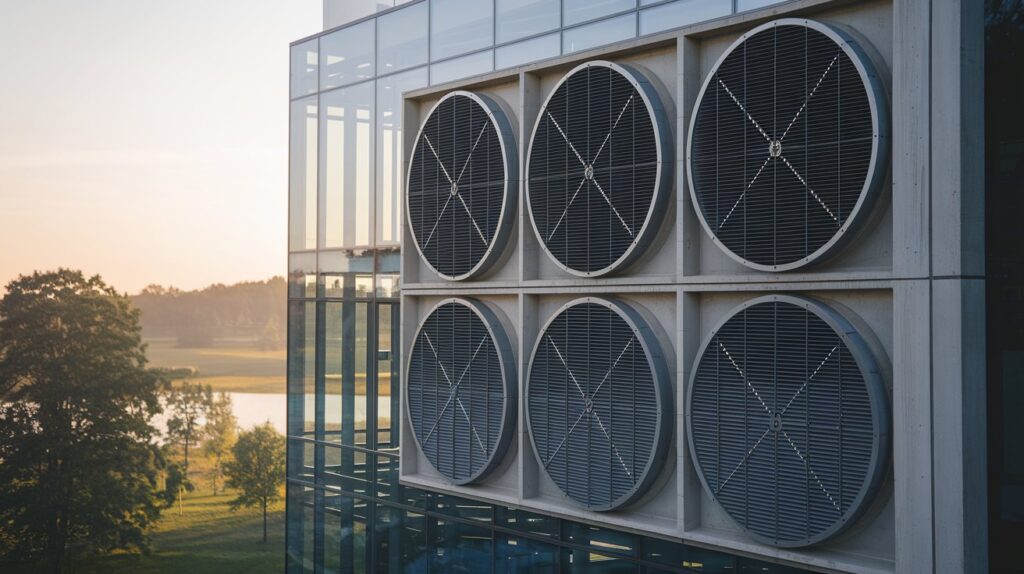As concerns about environmental sustainability and energy costs rise, the need for energy-efficient HVAC systems in building design has never been more critical. Many homeowners demand solutions that reduce their carbon footprint, lower utility bills, and enhance comfort. Advancements in HVAC technology are reshaping building design, offering a glimpse into a more efficient and sustainable future.
Why Energy Efficiency Matters in HVAC Systems
Heating, ventilation, and air conditioning (HVAC) systems account for a significant portion of energy consumption in single-family homes-up to 50% of total usage. With energy prices climbing and climate change at the forefront of global concerns, improving HVAC efficiency is a win-win solution. Not only do efficient systems reduce greenhouse gas emissions, but also save businesses and homeowners money.
Modern HVAC systems are designed to balance energy consumption and performance. This means systems that use less energy without compromising comfort, a key consideration for business owners, landlords, and single-family homes that demand consistent indoor climate control.
Key Innovations Shaping the Future of HVAC
Smart HVAC Systems
Smart HVAC systems are at the forefront of the energy-efficiency revolution. These systems use sensors, IoT (Internet of Things) technology, and AI to monitor and optimize energy usage in real time. Smart thermostats, for instance, can learn user habits and adjust temperatures accordingly, ensuring comfort without unnecessary energy consumption.
Furthermore, predictive maintenance technologies can analyze system performance and alert building managers to potential issues before they escalate. This not only reduces downtime but also extends the lifespan of HVAC equipment.
Integration with Renewable Energy
As renewable energy sources like solar and wind become more accessible, HVAC systems are being designed to integrate seamlessly with these technologies. Solar-powered HVAC systems, for example, can harness the sun’s energy to provide heating and cooling, significantly reducing reliance on fossil fuels.
Additionally, geothermal HVAC systems are gaining popularity. These systems use the Earth’s consistent underground temperatures to heat and cool buildings efficiently. Although the initial installation cost is higher, the long-term energy savings and reduced carbon emissions make it an attractive option for sustainable building design.
Advanced Materials and Technology
The materials used in HVAC systems are also evolving. Advanced heat exchangers, for instance, use innovative materials like graphene to enhance heat transfer while reducing energy loss. Variable refrigerant flow (VRF) systems offer precise temperature control and use refrigerant as a cooling and heating medium, ensuring energy efficiency in multi-zone buildings.
Other advancements include magnetic refrigeration and solid-state cooling systems, which eliminate the need for traditional refrigerants and further reduce environmental impact.
The Role of HVAC in Net-Zero Buildings
Net-zero buildings generate as much energy as they consume, essential to sustainable design. HVAC systems are critical to achieving this status by ensuring energy efficiency and reducing energy consumption. Key strategies include:
- Heat Recovery Systems: Capturing waste heat from HVAC operations and redirecting it for other uses.
- Zoned Heating and Cooling: Allowing for individualized temperature control in different building areas, ensuring energy is only used where needed.
- Passive Design Integration: Incorporating passive heating and cooling strategies like thermal mass and natural ventilation into building design to reduce HVAC dependency.
Smart Building Integration

In the future, HVAC systems will be fully integrated into smart buildings, creating a cohesive and responsive environment. Smart buildings use interconnected systems to optimize energy usage, improve comfort, and reduce operational costs. HVAC systems communicate with lighting, security, and other building systems, creating a seamless and efficient operation.
For example, occupancy sensors can detect when a room is empty and adjust heating or cooling to save energy. Weather forecasts can be integrated into HVAC controls, allowing the system to pre-cool or pre-heat a building based on anticipated outdoor conditions.
Sustainability and Indoor Air Quality
Energy efficiency in HVAC systems is essential for improving indoor air quality (IAQ). Future systems will focus on maintaining optimal humidity levels, filtering pollutants, and ensuring adequate ventilation while using minimal energy.
Technologies like UV air purifiers, electrostatic filters, and high-efficiency particulate air (HEPA) filters are becoming standard in advanced HVAC systems. These enhancements conserve energy and create healthier living and working environments.
Challenges and Opportunities
While the future of energy-efficient HVAC systems is promising, several challenges remain. These include:
- High Initial Costs: Advanced technologies and materials often come with higher upfront costs, which can deter widespread adoption.
- Retrofit Challenges: Integrating modern HVAC systems into older buildings can be complex and costly.
- Technological Integration: Ensuring seamless communication between HVAC systems and other smart building technologies requires robust infrastructure and expertise.
Despite these challenges, the opportunities are immense. Governments and organizations worldwide are incentivizing the adoption of energy-efficient systems through tax credits, subsidies, and grants. As technology advances and costs decrease, these systems will become more accessible to homeowners, landlords, and businesses.
The Role of Professionals in Energy-Efficient HVAC Design
Skilled professionals are essential to fully realizing the potential of energy-efficient HVAC systems. HVAC designers, installers, and technicians must stay updated on the latest technologies and best practices. Proper installation, regular maintenance, and timely upgrades are critical to maximizing energy efficiency and system performance.
The Future of HVAC is Here
The future of HVAC systems in building design is not decades away-it’s happening now. As energy efficiency becomes a global priority, these systems are evolving to meet the demands of modern architecture and sustainability goals. From smart technologies to renewable integrations, the HVAC industry is heading toward a greener, more energy-efficient future.
These systems are essential for meeting the demands of modern living while addressing the pressing need for energy conservation. As these advancements become more mainstream, the future of building design will undoubtedly be more sustainable, healthier, and efficient. Energy-efficient HVAC systems transform building design, offering innovative solutions combining sustainability, comfort, and performance.
If you want to upgrade your HVAC system or explore energy-efficient options, a professional heating and cooling service in Milledgeville can help you through the process. They will ensure that your home or business has the best solutions for long-term comfort and efficiency.

